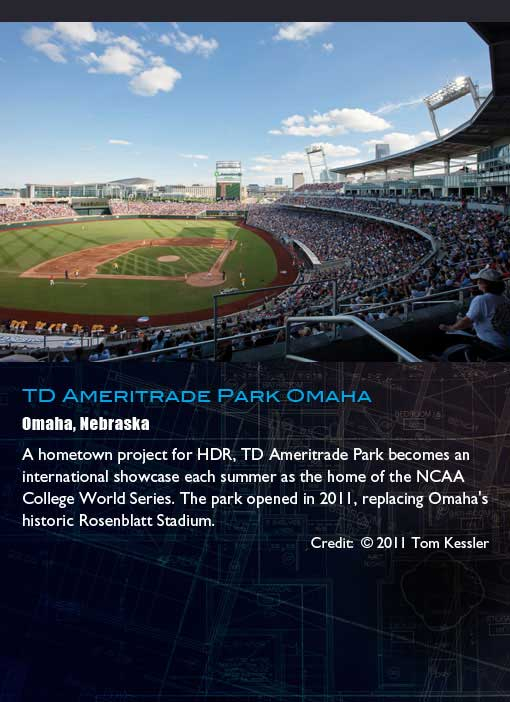Degree Leads Alumnus to a World of Opportunity
By Grant Martin
 |
|
George Little, a 1981 graduate of the UAB School of Engineering, was inducted into the Alabama Engineering Hall of Fame in 2010 and was named one of UAB’s “40 Engineers Making a Difference” in 2011. |
When George Little accepted his first job in electrical engineering, he never expected that his career would take him around the world and to the highest levels of leadership. “Being the CEO of an international company was not on my radar,” says the 1981 graduate of the UAB School of Engineering.
That’s just what happened recently when Little was promoted to CEO of HDR, an engineering and design firm based in Omaha, Nebraska, with 7,800 employees in 185 offices and a roster of construction projects in more than 60 countries. The firm currently has five projects in China, including designing the world’s first “medical city” in Beijing. “This will be the first fully integrated health community in the world,” says Little. “We’re working on a master plan that will include 10 hospitals with 1,000 beds apiece. To put that in perspective, consider the growth of UAB’s medical center over the last few years, then multiply its size by 10.” When completed, the Beijing complex will cover 4.7 square miles—equal to two-thirds the size of Manhattan—and is expected to cost $7 billion.
Exploring Options
Little says he developed an interest in electricity in high school when he participated in an Explorer’s post sponsored by Alabama Power. A resident of Hueytown, Alabama, he began working for the company while he was an undergraduate at UAB, and he stayed at Alabama Power for eight years after graduation. Then he took a job with HDR’s office in Minneapolis—a move that opened up a new world of experiences and opportunities. “The electrical work was a very small part of what we were doing, so I was exposed to a wide range of disciplines,” Little says. “I got experience with wastewater engineering, highways and bridges, and the whole variety of construction and design projects HDR handles. As my confidence grew, I realized that I enjoyed working with clients and the business development aspects of being in management.”
He also got the opportunity to cross other boundaries. “I had never done much traveling outside Alabama before I took the job with HDR,” Little says. The position took him to project sites across the country, and after managing the Minneapolis office for several years, he moved to Omaha to take over the company’s engineering division in 1998.
(Story continues after the slideshow)
Bridges, Ballparks, and Beyond
While HDR may not be a household name, many people are familiar with some of the company’s projects, such as the Hoover Dam Bypass or T.D. Ameritrade Park in Omaha, which replaced Rosenblatt Stadium in 2011 as the home of the NCAA College World Series. While these two projects would seem to have nothing in common, it highlights the diversity of HDR’s work, Little says.
“There are six primary areas where HDR functions,” he explains. “Our engineering company works in transportation, which includes designing highways and bridges as well as transit systems; water/wastewater, where we design and build water plants and do groundwater modeling; and our federal and energy group, which does a lot of power work for many utilities, and works for the Department of Energy, Department of Defense and the Corps of Engineers.
“Our architecture company focuses mainly on health care, where we’ve been ranked number one in design for the past eight years; science and technology, which deals with high-level research facilities; and civic and community architecture, where we design large prisons, courthouses, and other public facilities.”
With such diverse interests, it’s important to have associates who can work across many disciplines, Little says. It also helps to be in touch with tomorrow’s needs while building to meet today’s needs. “You’ve got to have big-picture thinkers,” he notes. “You’ve got to have people with a lot of experience who know enough about the industry so that they can look toward the future and see where the technology is going.
“For example, we have to be mindful of the changes in health care when designing a building that will be in use for the next few decades. We can apply that to all of our main business lines. The power industry is slowly moving away from some of the big coal facilties to other forms of generation including nuclear, solar, and wind power to name a few. As more people move into cities, we won’t be building highways and bridges as much, but we will be designing more new transit options. Each area is different, but they all require the same forward-thinking approach.”






